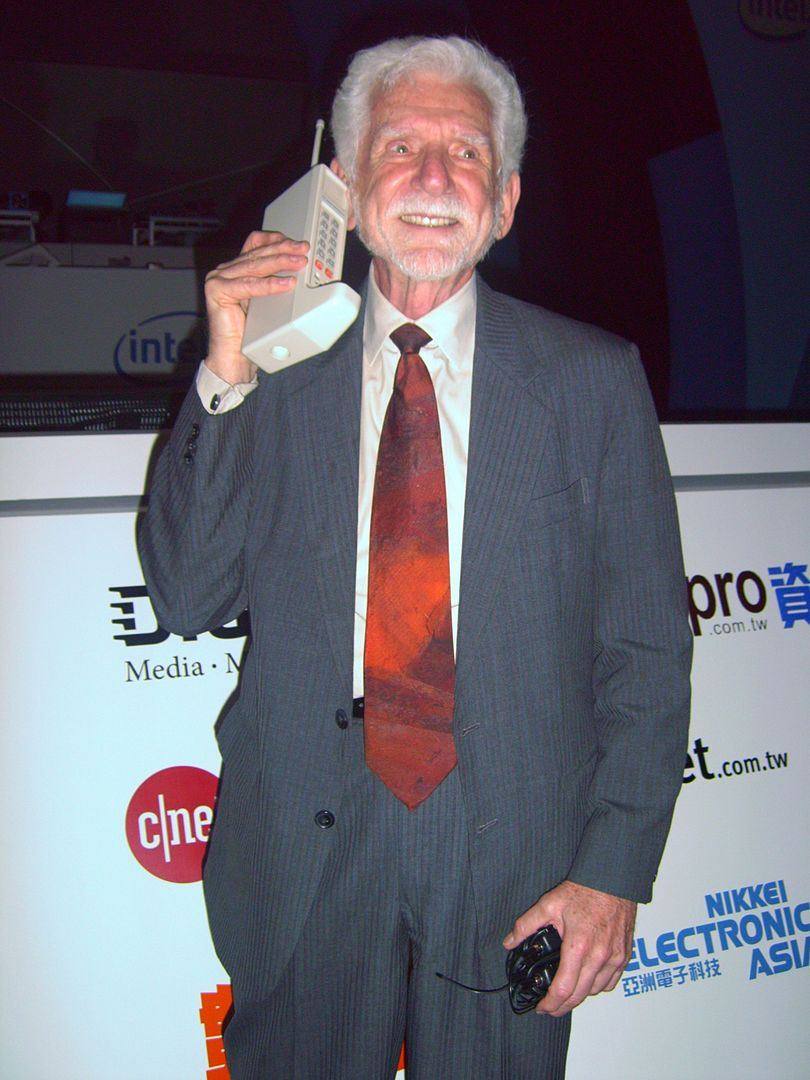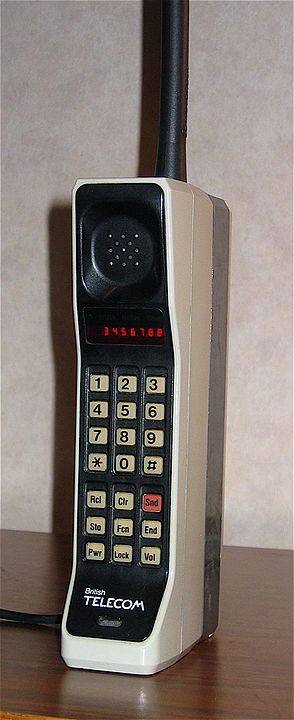How Mobile Phones Were A Game-Changer For Businesses

Today’s mobile phones deliver a myriad of opportunities to end-users. For businesses of all kinds, smartphones are a central component – and they continue to grow in importance.
Their robust capabilities have undoubtedly made a significant impact on companies and consumers. Enhanced functionality has taken convenience to another level.
Mobile phones create a bridge between businesses and on-the-go customers, enable business users to send emails and access work folders from anywhere with a wireless internet connection, provides unlimited search options and helps you find answers to almost anything in a matter of seconds.
Not to mention the capability of smartphone maps to identify the nearest Indian restaurant – and guide you there! You don’t get that service with the Yellow Pages.
A Google survey reveals 75% of employees confirm they are more productive thanks to their smartphone.
At the last count, it was estimated some 6.95 billion people own a smartphone. That ranks mobile phones as one of the most popular consumer items on the planet.
Sixty per cent of the world population use smartphones to access the internet. People are also spending more time on their mobile handsets than desktop PCs, laptops and even TVs.
Quite simply, mobile phones are used for practically everything from reading, watching your favourite TV shows, listening to music, chatting with friends and colleagues, business conferencing, tracking business expenses, creating shopping lists and much, much more.
Did we mention you can also find the nearest Indian restaurant?
Today’s mobile phones enhance digital interactions in more ways than you might imagine – even to the point that your phone can communicate with other smart devices. All it takes is a simple voice command.
“Siri, turn on the disco lights.”
Future smartphones will become even more personal, interactive and hands-free. You will even be able to ask Siri to order you a lamb Bhindi and have it delivered to your doorstep.
It’s hard to imagine that it’s only taken mankind a little over 100 years for us to get this far.
Oh yes, did you know that the mobile phone was first envisioned in 1906 by an English caricaturist Lewis Baumer?
The potential for mobile phones began even earlier than that!
A Brief History of Mobile Phones
It’s quite mind-blowing to think that wireless anything was in the minds of men in the early 1900s. The majority of homes in the UK didn’t even have electricity at this point.
Yet in 1900, the first successful wireless communication was sent when the Canadian inventor Reginald Fessenden covered a distance of one mile to report the weather.
The experiment gave rise to the possibility of using radio waves to transmit the human voice.
Two years after Baumer’s satirical cartoon was published in Punch Magazine, a commercial patent featuring phones without cables was lodged in the US Patent Office by Professor Albert Jahnke and the Oakland Transcontinental Aerial Telephone and Power Company.
The idea of mobile telephony was officially announced as a viable possibility.
However, it was not the US, but Europe that became the bedrock on which the mobile empire was built. The technologically-minded Germans were, of course, pioneers.
The first example of what could be remotely classed as wireless telephony appeared in 1918. The Germans used radio transmission to relay information to military trains running between Berlin and Zossen.
Six years later, the Reichstag’s wireless connection was trialled on public railroad services between Berlin and Hamburg. The trial was successful and spawned the birth of Zugtelephonie AG in 1925 – a commercial business founded to supply telephony equipment to the locomotion industry.
The novelty of phoning the office from the train was such as hit with first-class passengers that the German mail service hopped on board as well.
Needless to say, the first “mobile phones” were not strictly wireless. They were more akin to two-way radios.
In the early 1940s, engineers at AT&T found a way to make the service more widespread by developing mobile phone stations which passed signals from one caller to another.
Taxi firms and emergency services were among the early adopters. The first calls on the area network were made on a car radiotelephone in 1946 Chicago.
Mobile phones would not be automated for another entire decade when a mobile phone system for private vehicles was launched in Sweden.
However, there was a slight design problem. The telephony device weighed a whopping 40kg. Consumers were put off. A mere 125 subscribers bought into the idea.
Sweden’s attempt may have failed as a commercial venture, but it did lay a marker that would trigger the next evolution of mobile phones.
The most significant advancement in mobile technology was the introduction of MOSFET (metal-oxide-silicon field-effect) invented at Bell Labs in 1959 – a US industrial research and scientific development centre owned by AT&T.
The semiconductor device is still the most dominant transistor for a wide-range of mass-produced electronics and a key contributor to the digital revolution.
Then the inevitable day arrived. Tuesday 3rd April 1973. This was the day that Martin Cooper made a call on a wireless, portable cellular phone. It would become a landmark date in wireless telephony communication.

The image of Dr Cooper above shows him modelling a prototype of the first mobile handset – a term that should be used loosely. It weighed 1.1kg.
That’s roughly equivalent to the weight of a pineapple.
Good luck slipping that into your Gucci handbag.
It would take Motorola 11 years to design a cellular phone that could be mass-produced and sold. In 1984, the engineers at Motorola had managed to reduce the size of mobile phones down from a pineapple to a brick.
The first marketable handheld mobile phone was alive; the Motorola DynaTac 8000X.
The Evolution of Mobile Phones
The mobile phone as we know it today was kickstarted by the Nordic Mobile Telephone (NMT) Group. Its goal was to make mobile phones accessible – unlike the “brick phones,” people were lugging around America.
It would take a while before the Nordic nations of Sweden, Finland, Denmark and Norway to nail their ambition. In the meantime, Motorola was the mobile industry leader.

The appearance of Motorola’s chunky Dynatac 8000X in the 1987 film, Wall Street sparked off the ‘yuppie era’. Handheld mobile phones gave prestige to the men in suits that could afford the jaw-dropping £3,000 price tag.
Around the same time, Scandinavia’s NMT Group made the breakthrough they had been working towards for over 20 years. The shining light was the Nokia Mobira Cityman 900 – an advancement compared to the one-tonne Dynatac.
The Cityman 900 measured 183mm x 43mm x 79 mm and weighed 760g. Better but not great!
Check out the size of the beast in the Nokia Museum.
Text followed five years later. In 1992, Neil Papworth, an engineer at Vodafone sent the first-ever SMS to the company’s director, Richard Jarvis. It read: “Merry Christmas.”
By the mid-1990s, Nokia was leading the charge in mobile phones. In 1994, the company released its 2110 – a mobile phone which targeted business users.
The 2110’s “candybar” dimensions were the smallest, lightest and most convenient portable GSM phone on the market. The breakthrough was the blueprint for the next evolution of mobile phones.
Around the same time, the concept of an internet phone was floated into cyberspace by the Israeli company, VocalTec. The company had developed technology that would pave the way for VoIP (voice-over-internet protocol) services – a vital ingredient in telecommunications for today’s businesses.
More on that later. First of all, we need to tackle how candybar mobile phones got smart.
The Birth of Smart Phones
The multi-functionality of today’s smartphones is an indispensable asset for business users today. But the development from embryo to fully-grown giant was a slow start.
With mobile phones growing in popularity, Siemens attempted to further their appeal by introducing coloured screens. The S10 sported an uninspiring 97 x 54-pixel display.
Consumers were having none of it. Downloadable ring tones, on the other hand, were all the rage. Remember Crazy Frog?
If not here’s a reminder!
The ringtone would later reach number 1 in the UK music charts.
Ouch!
Who needs a colour screen when you’ve got a crazy frog!!
The following year, Finnish phone makers Nokia recorded another first; a WAP browser. This ingenious innovation paved the way for internet-connected mobile phones.
When Research In Motion unveiled the BlackBerry and Motorola launched its Timeport, the smartphone was one step closer.
Blackberry handsets were the first to offer email service on mobile phones. At the time they were seen as the ultimate tool for business users. Conscientious employees were even responding to emails from their holiday villas.
Users even admitted to sending emails whilst seated on the toilet which earned the mobile phone the nickname, ‘Crackberry’.
1999 was also the year Motorola Timeport introduced the first tri-band GSM, making phone calls from a personal handset possible from anywhere in the world. It was the first stab at an internet-enabled mobile phone.
The year 2000 was a breakthrough year for mobile phones. The Japanese added a camera and the first Micro-USB port was installed on a smattering of different models.
The humble mobile phone had truly begun its transformation into a pocket computer. By 2007, micro-USB was the standard port for smartphones.
The turn of the century was also the year that Nokia launched the legendary 3310.
Now, this was a real game-changer in mobile phone sales. With 126 million units rifled off the shelves, the 3310 still ranks among the highest-selling mobile phones of all time.
The iconic handset showed some of the earliest innovations we take for granted in today’s smartphones; the battery that lasted for several days without needing a recharge, it had an instant-messaging type feature that enabled users to send text message conversation and extended the length of standard texts by three times. It even boasted a vibrating ring function.
However, the real seller – obviously – was the iconic snake II game. Who could resist!
Three years later, 3G was adopted as the worldwide standard and Research In Motion’s Blackberry 6210 took the mobile phone several steps closer to smartphone status.
The Blackberry 6210 – also known as Blackberry Quark – was the first mobile phone to sport a fully-functioning email, web browser and a proper chat messenger.
To be fair, the 6210 was a game-changer for business users. Still didn’t sell as many handsets like the 3310 though.
Snake II had got pulling power.
At least until those pesky iPhones came along.
The Introduction of Mobile Apps
When Apple launched its first iPhone in 2007, its competitors mocked it. Steve Jobs and his team were thought of as “PC guys” who could not simply “walk in” and figure out the mobile phone market.
Microsoft’s then-CEO, Steve Ballmer said the iPhone would not “get any significant market share.”
As we know, the iPhone did okay – despite competition from a bevvy of Android phones in 2008.
On second thoughts, that’s probably why Apple did so well.
Android 1.0 was unveiled on the T-Mobile G1/HTC Dream which featured a 3.2-inch touchscreen and a QWERTY keyboard – an upgrade on most mobile phones.
But Android 1.0 was slated in the media. To his credit, Google Chairman and CEO Eric Schmidt did acknowledge the project was “ambitious”.
Whilst Google was still working out its operating system, Apple had already nailed the multi-touch display and digital keyboard. The company’s next masterstroke was to launch the App Store in July 2008. In just one week, iPhone users downloaded 10 million apps.
Mobile Apps would revolutionise the business space. In 2009, WhatsApp appeared alongside the leading social media apps giving users an alternative option to send and receive messages over the internet for free.

Today, apps are used extensively for business operations, both on mobile devices and desktop PCs. Whatever you need to do, “there’s an app for that!”
From increasing productivity and collaborating in the cloud to editing images and preparing presentations via your smartphone, mobile apps like Microsoft’s Office 365 suite of tools enable users to safely access work files directly from their mobile device.
A Brief History of VoIP
The evolution of mobile phones would not be complete without documenting a brief history of VoIP. Phone calls over the Internet have already become an important asset in business environments, and there is still more to come.
In recent years, Microsoft unveiled Voice 365, a next-generation VoIP phone system that’s capable of receiving a high volume of inbound calls at the same time.
Voice transmission has come a long way since the first voice packet was developed at MIT’s Lincoln Lab in 1973. Back then, the Linear Predictive Coding (LPC) imagined by Bob McAuley, Ed Hofstetter, and Charlie Radar was totally groundbreaking.
To underscore the significance of MITs invention, LPC is a speech analysis technique that still forms the backbone of modern VoIP technology.
No such technologies were as important in the VoIP field for another 16 years, when developer Brian C. Wiles designed a basic software that allowed video game players to communicate with one another over dial-up modems.
That’s when the VoIP snowball started to roll.
In 1993, David Allen and Herold Williams fashioned the first video teleconferencing system for C-Suite executives staying at his luxury resort. Guests could check in for important meetings with other board members whilst they were on holiday.
Two years later, the previously mentioned VocalTec Communications were launching the world’s first commercial VoIP application – VocalTec Internet Phone. It’s 486 computer processor, 8MB of RAM and 16-bit sound card was about as hi-tech as the internet could be in those days.
Although VocalTecs Internet Phone was less expensive to place international calls, the early VoIP systems suffered from poor call quality and suffered from reliability issues.
A major breakthrough for VoiP began in 2004 – broadband. Faster internet speeds enabled users to engage in phone calls with the clarity of audio they received over standard public switched telephone networks (PSTN).
In 2007, VoIP was unleashed on mobile phones. By the end of 2008, 80% of all new PBX lines were VoIP-enabled. The future of business communication was really beginning to take shape.
VoIP telephone services gathered pace quickly in the business landscape, enjoying a 17% year-on-year growth by 2012. The pace at which people were adopting IP telephony in the United States prompted AT&T to replace its legacy copper wire cables with fibre optics and IP switches.
By 2018, VoIP telephony services was a $20 billion business in the US alone. Video-conferencing has been steadily traversing from the office and into the home.
The novel coronavirus pandemic will expedite the timeline for homeowners to adopt VoIP technology. In many instances, businesses with being at the forefront of the adoption to help work from home employees stay in touch with colleagues.
With regular PTSN landlines will be obsolete by 2025, VoIP and mobile phones are the future of voice communication. It’s been quite the journey to get here. The big question is, where will internet phones take us next and how will they impact your business?
If you need help installing VoIP for your business users, contact our experienced engineers today.
Must dash, my lamb Bhindi has arrived.


